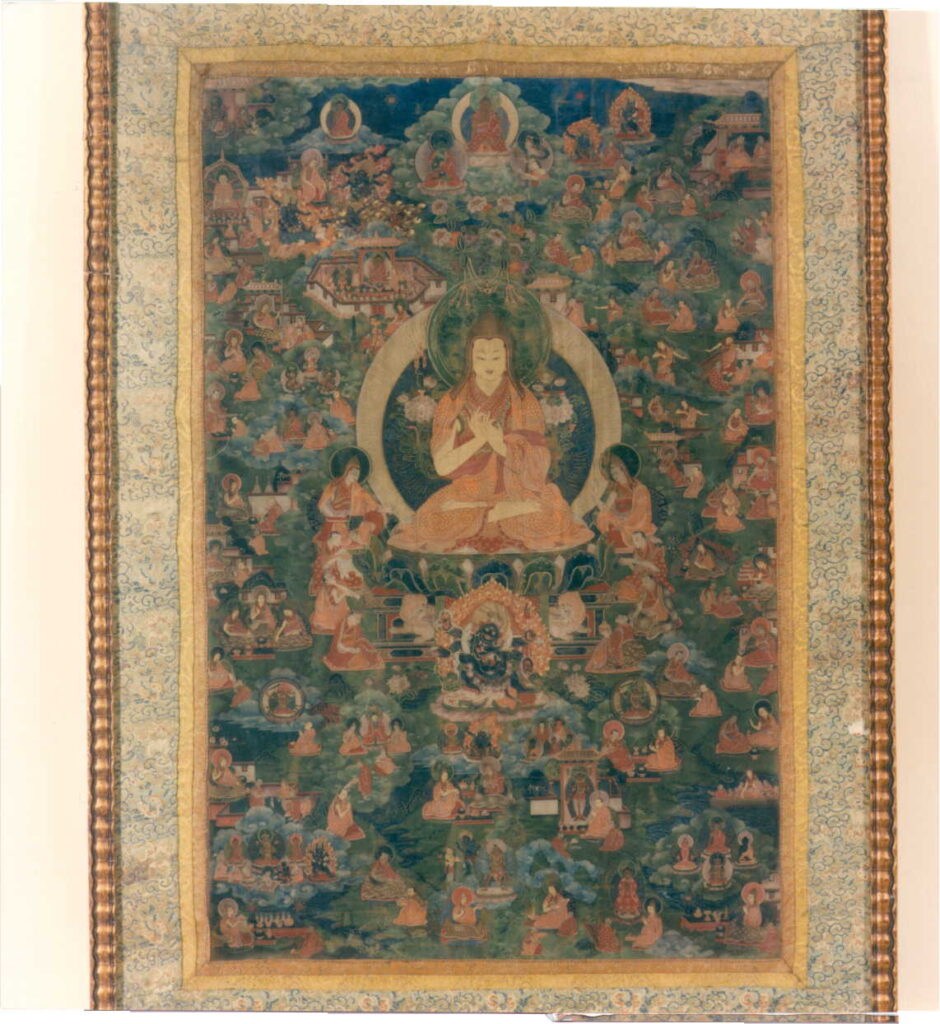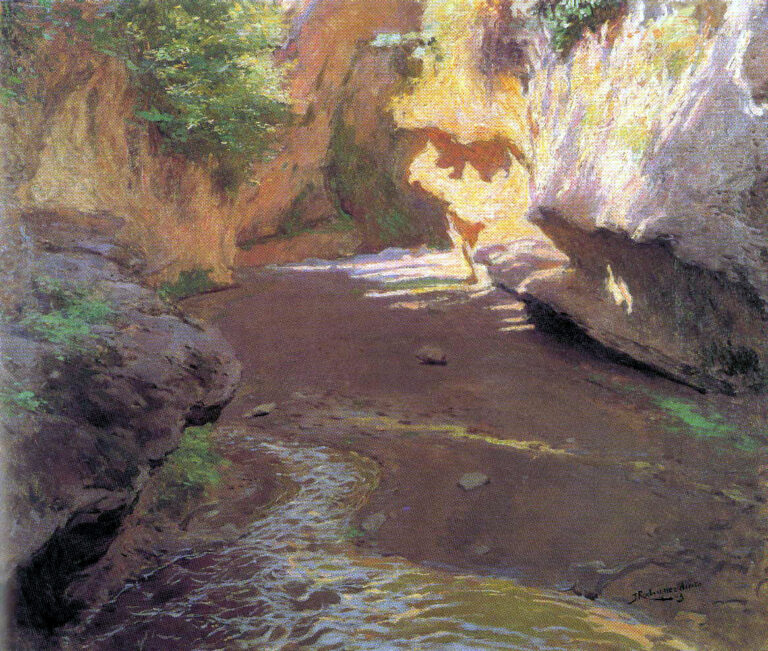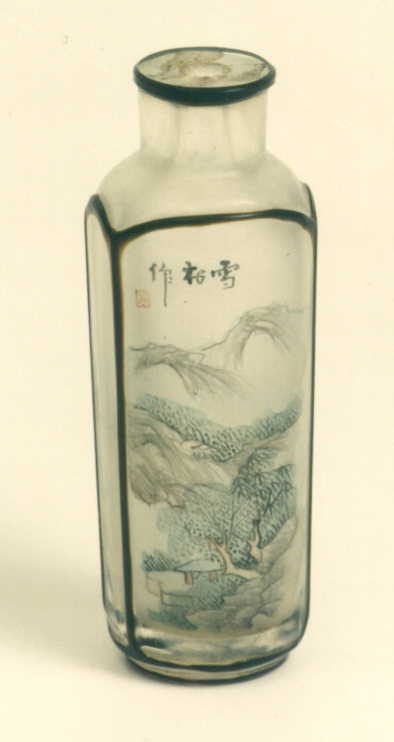EPISODES OF TSONGKAPA’S LIFE
Tsongkhapa (1357-1419) was the founder of the Tibetan monastic order Gelukpa – “the virtuous ones”- and the founder of Varjayana Buddhism. He is considered a reincarnation of Manjusri, the bodhisattva of wisdom, and to him we owe the foundation of several monasteries in Tibet such as Sera, Ganden and Drepung. The order he founded became the majority in Tibet after the V Dalai Lama (1617-1682), achieving political and religious control since then, and his veneration has a double aspect, that of reformer of the doctrine and the clergy and divinized as an important link in the chain of the spiritual lineage, which goes back to Mansjuri and Avalokitesvara.In Tibetan iconography, whether pictorial or sculptural, he is recognized by his attributes as the founder of the Gelukpa order, either in single-person representations or in multiple configurations, his image occupying the main place of the representation.In this thanka allusion is made to different episodes of Tsongkhapa’s life, in which visions, miracles, and in a very significant way his spiritual lineage are combined, which gives him the position he occupies in the center of the composition, under the serene contemplation of Buddha and his disciples. The artist who created this work used compositional resources -central location, vertical axis, size of the character- technical (light and color) to highlight the presence of Tsongkhapa. Thus the figure appears in the upper center, seated on a throne in the shape of a lotus flower, in an attitude of teaching marked by the posture of his hands in bhûmisparça-mudra or gesture of taking the earth as a witness and his legs in vjaraparyanka or lotus or diamond attitude. But what identifies the character are his personal attributes, such as the headdress formed by a yellow pointed cap, the monk’s robe, and the two lotuses that flank his body. On them are represented the sword of compassion and the book of the Sutra of Compassion, original attributes of Mansjuri, of which he is a reincarnation. The image is framed in a triple circle of light that deepens the spiritual quality of the character. From the lower half of his body, different characters appear flanking him on both sides in number of eight, and represented according to their monastic and spiritual hierarchy. Those closest to Tsongkhapa, like him, wear the cap of the Gelukpa sect and the spiritual halo of light, while the remaining six appear with their skull shaved, uncovered, and offering him various objects. By their attributes the two characters closest to him could be identified as his two disciples mKhas-grup-rje and r Gyal-tsáb-rje. At his feet, the figure painted in black, with six arms is identified with Mahakala represented with a terrifying aspect. The black color of the figure reflects the ultimate reality, the true understanding of enlightened beings. This form of Mahakala, according to the Tibetologist Tucci, and collected by Thurman, follows the literary description made by the ascetic Shavaripa after a vision that happened in a cemetery in southern India.Mahapala is a terrifying deity, of Indian origin, very popular in Tibet that typifies the idea of an enlightened being and a faithful protector guardian of the Dharma. For this reason its iconography is very varied, as much in its attributes, in its postures and gestures as in the color of its representation.as a counterpoint and crowning on the same vertical axis the main image, we find a multiple configuration of spiritual order, framed by the sun and the moon, as an allusion to the totality. This configuration is composed of three main characters, highlighting in the center the figure of Buddha flanked to his right and at his feet by a figure painted his face in blue, completing the central figures of the founder of the Gelukpa order and his spiritual lineage, the rest of the composition is dedicated to the representation of different episodes of the life of Tsongkhapa, in which the artist has exchanged through the characters and their actions the spiritual and earthly planes. To give unity to all these scenes, arranged following a strict sense of balance of volumes, are arranged on a cobalt blue background, from which emerge the different episodes that follow one another on a space tornadic blue and green clouds that house the miraculous events of Tsongkhapa’s life. With them the artist shows what he has learned and visually transmits his teachings, resorting to a visual code where the different influences of Chinese, Nepalese and Tibetan origin can be appreciated.this painting by the compositional and technical characteristics is framed within the style of the so-called pictorial school called Menri Sarma. Its name is identified with the painting of the Gelukpa order, in which a main character appears in a general composition composed of a large number of characters, and where landscape elements are introduced in the borders, and the use of silk brocade fabrics with peony motifs to frame the thankas. There is a very similar work in the Museum fur Volkerkunde in Munich (MARTIN, 1980: 89) / Extracted from: Isabel CERVERA FERNÁNDEZ: Fundación Rodríguez-Acosta. Collection of Asian Art. Granada, 2002 / Bibliography: MARTIN, H. E. R.: El arte tibetano. Barcelona, 1980, p. 48 / RHIE, M.; THURMANN, R.: Wisdom and Compassion. The Sacred Art of Tibet. New York, 1992, p. 274 / HELLER A.: Tibetan Art. The development of spirituality and art in Tibet from 600 to 2000 A.D. Madrid, 2001.




